NCSE's annual raft trip down the Grand Canyon just returned, and Teacher Scholarship winner Crystal Davis offered to describe her experience on the river with us. Enjoy, and consider donating to the scholarship fund to support future trips like this.
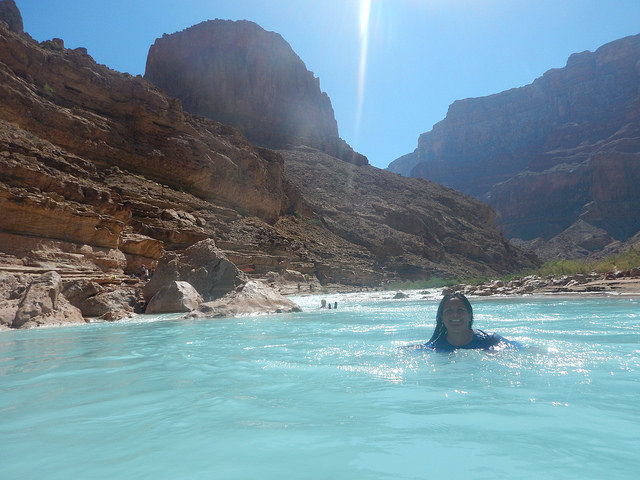 I’m deathly terrified of water, rapids, rafts, and boats. I can’t begin to tell you how much I hate and fear boats, the swirling water that taunts me, threatening to drag me under. Both of these cause an immediate panic attack as I’m certain I will drown every time I am on a boat. I don’t even feel safe from drowning on a giant cruise ship, and a raft is minuscule in comparison. So why did I spend eight days this summer on a raft in the whitewater rapids of the Grand Canyon?
I’m deathly terrified of water, rapids, rafts, and boats. I can’t begin to tell you how much I hate and fear boats, the swirling water that taunts me, threatening to drag me under. Both of these cause an immediate panic attack as I’m certain I will drown every time I am on a boat. I don’t even feel safe from drowning on a giant cruise ship, and a raft is minuscule in comparison. So why did I spend eight days this summer on a raft in the whitewater rapids of the Grand Canyon?
Earlier in the year I applied for a scholarship with the National Center for Science Education (NCSE). If selected, the scholarship would cover food, airfare, and a bucket list trip of rafting down the Grand Canyon for two teachers.
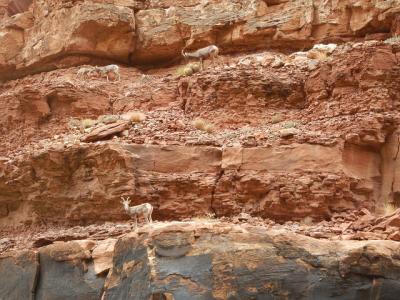 I was lucky enough to receive one of these scholarships from NCSE. As a teacher this trip was something I could not have afforded without NCSE’s generous scholarship. For eight days this summer I basked in the wonder of the Grand Canyon as I traveled through time accompanied by research scientists, science professors and writers. While not a formal classroom setting, I learned more here than I have in any of my professional development seminars.
I was lucky enough to receive one of these scholarships from NCSE. As a teacher this trip was something I could not have afforded without NCSE’s generous scholarship. For eight days this summer I basked in the wonder of the Grand Canyon as I traveled through time accompanied by research scientists, science professors and writers. While not a formal classroom setting, I learned more here than I have in any of my professional development seminars.
Rock walls made of sandstone, shale and limestone towered up to a mile overheard in this informal classroom setting. I learned the names and ages of formations such as the Unkar Group, Vishnu Schist, and Bright Angel Shale. I was able to see and touch these and other geologic formations that are between 252 million and 1.8 billion million years old.
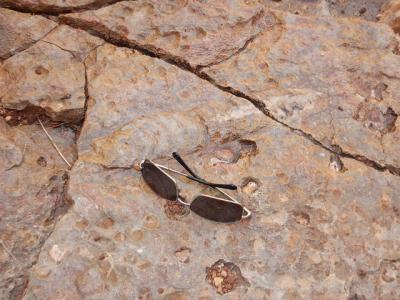 NCSE staff members Steve Newton (geologist) and Josh Rosenau (evolutionary biologist) explained the scientific formation of the Grand Canyon as we cruised down the river. They painted a vivid picture of how the Grand Canyon changed over time as we stopped to look at fossils of brachiopods, trilobites, bryozoans and lizard tracks. They contrasted the scientific theory of its formation to the creationist belief, showing how creationists have cherry picked data to make it fit their beliefs.
NCSE staff members Steve Newton (geologist) and Josh Rosenau (evolutionary biologist) explained the scientific formation of the Grand Canyon as we cruised down the river. They painted a vivid picture of how the Grand Canyon changed over time as we stopped to look at fossils of brachiopods, trilobites, bryozoans and lizard tracks. They contrasted the scientific theory of its formation to the creationist belief, showing how creationists have cherry picked data to make it fit their beliefs.
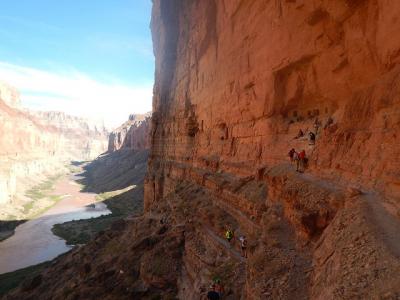 The Fourth of July celebration was different from any Independence Day I’ve experienced before. Normally I’d spend the evening lying on the grass of Grand Park in Los Angeles, watching fireworks and listening to a band play. This year, I woke up on a beach, packed my camping gear in a dry bag, helped load two rafts and was off to spend a full day running some of the highest rated rapids in the Grand Canyon. My fellow rafters encouraged me to move to the front of the raft as we approached my namesake Crystal Rapid (rated a 10+), but I unselfishly let them keep the best seats; again, I’m deathly terrified of water, rapids, rafts and boats. For dinner there was the traditional watermelon, burgers and hotdogs made by the most amazing raft crew I have ever met. That night I slept outside on a sandy beach with the stars twinkling and dancing overhead. There were no lights from the city anywhere in sight. My fireworks were shooting stars that lit up the night sky as they flew by. I was in awe of how insignificant I am in the course of geologic time.
The Fourth of July celebration was different from any Independence Day I’ve experienced before. Normally I’d spend the evening lying on the grass of Grand Park in Los Angeles, watching fireworks and listening to a band play. This year, I woke up on a beach, packed my camping gear in a dry bag, helped load two rafts and was off to spend a full day running some of the highest rated rapids in the Grand Canyon. My fellow rafters encouraged me to move to the front of the raft as we approached my namesake Crystal Rapid (rated a 10+), but I unselfishly let them keep the best seats; again, I’m deathly terrified of water, rapids, rafts and boats. For dinner there was the traditional watermelon, burgers and hotdogs made by the most amazing raft crew I have ever met. That night I slept outside on a sandy beach with the stars twinkling and dancing overhead. There were no lights from the city anywhere in sight. My fireworks were shooting stars that lit up the night sky as they flew by. I was in awe of how insignificant I am in the course of geologic time.
I couldn’t have asked for a better learning opportunity, even though it meant conquering my deeply rooted fears. I deepened my understanding of the geology and ecology of the Grand Canyon, and share that experience and understanding with my students.
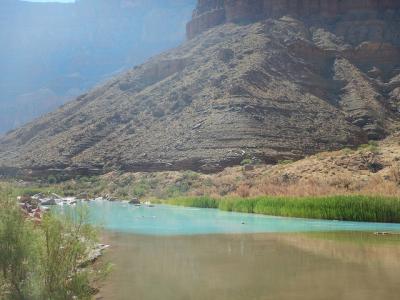 The focus in my classroom this school year is the Grand Canyon. In my environmental course we finished covering Garret Hardin’s the Tragedy of the Commons. My students learned that commonly owned resources are overused and exploited due to human nature. We tied the Tragedy of the Commons to national parks and the Escalade development proposed for the Grand Canyon. Basically this plan, currently being debated by the Navajo Nation’s leaders, will allow the development of a tram to the confluence of the Colorado River with the Little Colorado River. I was able to visit this area on my rafting trip this summer and it is a pristine ecosystem that is home to endangered species and a sacred site for many Native American tribes. Developing the tram would decimate the confluence.
The focus in my classroom this school year is the Grand Canyon. In my environmental course we finished covering Garret Hardin’s the Tragedy of the Commons. My students learned that commonly owned resources are overused and exploited due to human nature. We tied the Tragedy of the Commons to national parks and the Escalade development proposed for the Grand Canyon. Basically this plan, currently being debated by the Navajo Nation’s leaders, will allow the development of a tram to the confluence of the Colorado River with the Little Colorado River. I was able to visit this area on my rafting trip this summer and it is a pristine ecosystem that is home to endangered species and a sacred site for many Native American tribes. Developing the tram would decimate the confluence.
My students are playing out the debate over the confluence in our classroom. They have been split into groups of stakeholders such as the Navajo Nation, rafting companies, geologists, ecologists, environmentalists, council members and citizens. After researching “their opinion” on the dam we will hold a debate to determine if the confluence is to be developed. Later in the year we will study the ecology of the Grand Canyon and how it will be affected by global warming, debate the removal of the Glen Canyon Dam, and study the geology of the Canyon.
The NCSE Grand Canyon trip reinvigorated and inspired me for this coming school year. I am so excited to bring this sacred place into my classroom and share it with my students. Thank you NCSE for giving me this opportunity.
